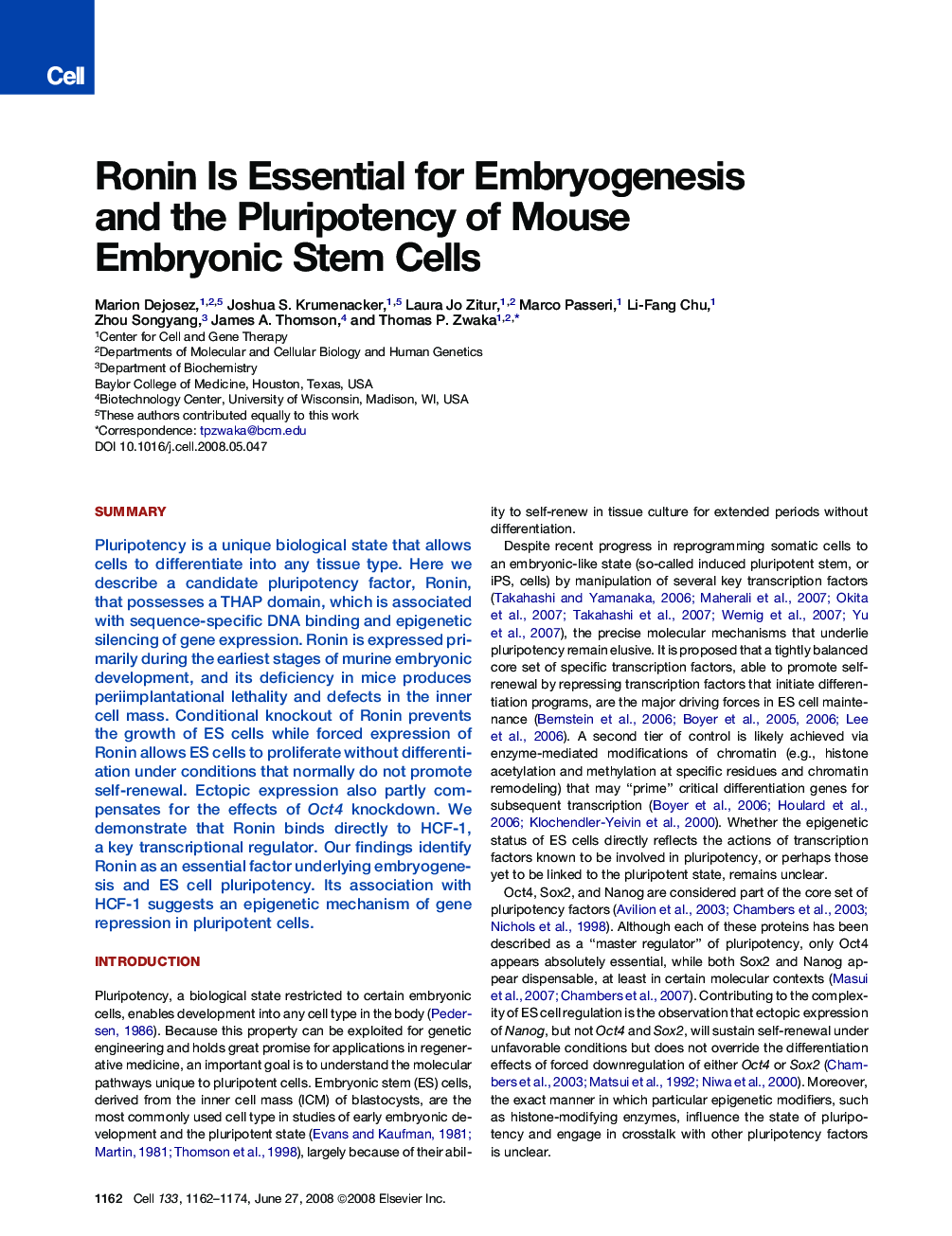| Article ID | Journal | Published Year | Pages | File Type |
|---|---|---|---|---|
| 2037347 | Cell | 2008 | 13 Pages |
SummaryPluripotency is a unique biological state that allows cells to differentiate into any tissue type. Here we describe a candidate pluripotency factor, Ronin, that possesses a THAP domain, which is associated with sequence-specific DNA binding and epigenetic silencing of gene expression. Ronin is expressed primarily during the earliest stages of murine embryonic development, and its deficiency in mice produces periimplantational lethality and defects in the inner cell mass. Conditional knockout of Ronin prevents the growth of ES cells while forced expression of Ronin allows ES cells to proliferate without differentiation under conditions that normally do not promote self-renewal. Ectopic expression also partly compensates for the effects of Oct4 knockdown. We demonstrate that Ronin binds directly to HCF-1, a key transcriptional regulator. Our findings identify Ronin as an essential factor underlying embryogenesis and ES cell pluripotency. Its association with HCF-1 suggests an epigenetic mechanism of gene repression in pluripotent cells.
